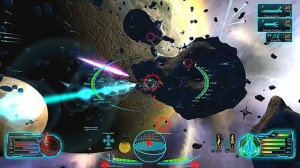
There have been a bunch of spacey games on Kickstarter, but none have the varied story of Skyjacker. After a confusing initial campaign, they decided to start fresh with a new, longer and clearer campaign, and thankfully it’s paying off. If you’re unaware, Skyjacker hopes to bring the openness of Grand Theft Auto, the high adventure of Lord of the Rings and the pulse-pounding thrills of Need for Speed in the vast darkness of space, which is quite a series of legacies to live up to. Can they do it?
I recently had the opportunity to have a Q&A with lead designer and creator Eugene Zhukov, and after reading his answers to my questions, I think their chances of living up to their lofty goals is pretty gorram good. ;) You can read the Q&A below after the cut, as well as see six exclusive new screenshots! Enjoy!
Brian Rubin: First off, thank you for taking the time to answer my questions. Now, for those who may be unaware, could you please describe the basic premise of Skyjacker to start us off? Please also give us the premise of the “Abyss Lights” book series upon which this is based.
Eugene Zhukov: Skyjacker’s story begins 20,000 years ago. An alien wanderer takes a human child named Ael out of our Ice Age and raises him among the tradelanes of the Galactic Society. Humans are mentally deaf, lacking the telepathic abilities of most galactic races, but that gives him an edge – he can do the forbidden and no one will know. So when Ael strikes out on his own, he does so as a space pirate, rising from lowly brigand to high-priced mercenary and delving into dark corners aliens have long since written off.
The Skyjacker campaign focuses on this story, but it’s also the story of the galaxy itself. The jobs Ael can take are informed by the competing alien civilizations and their conflicting agendas. So when one empire gains a foothold over another, everything changes! We don’t want to spoil the late-game story but Ael’s “deformity” will become the one thing that stands in the path of galactic extinction.
Brian: Skyjacker promises both single and multiplayer modes. Could you first detail what the single player game will be like in terms of openness, player choice, mission types and so on?
Eugene: Mission pathing is similar to Freelancer, in that there are story missions and procedurally-generated side missions. We’ll have an “easy mode” to automatically jump from mission to mission, but there’s no such thing as a linear path. And you can ignore the missions entirely. Just fly around, enjoy the soundtrack, harass random travellers or let them go on their way, watch the aliens butt heads, push asteroids into planetary atmospheres, do something nasty and random with the weapons you’ve accumulated. This is your story.
All missions are acquired through the Pirate Stock Market, a network of bounties and bids between space pirates. Why “Stock Market”? You’re a pirate! Each race has its own stock driven by supply and demand. Pirates will ask less for a contract when there’s a glut of that race’s loot, and demand more when there’s new technology on the horizon. The player connects to this network, finds a bounty they want, and buys the contract. Over time they’ll be able to afford more expensive missions, split up the cost between gang members, hit up loan sharks, become infamous enough to be approached, hire alien wingmen – all through the Market.
We try to avoid soft objectives like escort missions, resource collection, “kill ten drop-bears”, and fetch-quests. Most of the mission goals are focused on acts of espionage: assassinations, sabotage, destruction, robbery, extraction, infiltration, etc. Apart from the goal, each mission is a complex scenario; you’ll have several obstacles to overcome, most of them not in the mission briefing. Screwing up on one doesn’t mean the end of the mission, it just makes your life harder – you can fumble your way through everything that happens and still succeed as long as you hit your target.
Brian: Could you now give us some details on the multiplayer game modes, especially cooperative mode?
Eugene: The classic multiplayer game modes (deathmatch, team deathmatch, capture the flag, and last man standing) are in, available both offline as solo botmatches and online as network play. Performance will be ranked on leaderboards with high scores, K/D ratios, hit/miss ratios, and any other metrics our community requests. We’re tentatively looking at 32 players per session.
The co-op game mode won’t have the same continuity of the story campaign, but it’ll also be run through the Pirate Stock Market. We’re going to fold in as many campaign missions as possible (i.e. all missions that have wingmen slots). Our concept demo is a good example of this: you have bots as your wingmen in story mode, so you’ll be able to play through that same mission with online players in their place.
Brian: Now, there are apparently several races with whom you can interact with, but the website doesn’t make it clear whether they’re fully playable or not? Could you please give a brief rundown of the races in the game and tell us which are playable, if any?
Eugene: The protagonist of the story campaign is human. You’ll be interacting with numerous significant, distinct alien races, some friends and some enemies, most friend or enemy depending on what you’ve been up to lately; you’ll have constant opportunities to either earn or steal their parts and add them to your ship. The aliens will not be playable, but you can part out an alien ship and enjoy a very similar experience.
Here’s a brief on the six “common” races, but this is the really really short version – we’ve got an entire wikipedia of content (still in Russian) describing each race’s personality, evolution, history, biology, etc. You’re welcome to read it if you don’t mind google-translated spoilers!
- Yatagooshees – reptiles, the patricians. The Yats control FTL travel through their hyperspace portals, and therefore, control the galaxy.
- Aspirogans – siliconoids, the rivals. Asps are well-known for being the best gun makers around, and for being the only other race to crack the code of hyperspace technology.
- Rak-Tak-Bashogee – arthropods, the brutes. A Rak-Tak believes that brutal force and heavy armor are better than any clever strategy or ingenious technology.
- Fslak-Tuembao – cephalopods, the thinkers. Every fleet in the galaxy wants a Fslak in the war room, planning their strategies; so far, the Yats are the only ones who do.
- Smaktu – molluscs, the farmers. The Smaktu grow autonomous organisms in space as the bulk of their technology. They’ve declared themselves “willing slaves” to the Fslak.
- Balagores – anthropoids, the nomads. The Bals lost their homeworld ages ago and don’t have much culture or technology to call their own. They’re famous for their ingenuity in patching parts together, and infamous for being total vagabonds – the bulk of pirates are Balagores.
Once we’ve completed Ael’s story we do have plans for a future expansion pack. Those missions will put you in alien shoes of numerous shapes and sizes, and give you a more intimate look at how their cultures behave and interact.
Brian: Skyjacker focuses heavily on ship customization. It looks as if you can even mix pieces of ships from different races to get something insanely unique. Could you please give us some details as to how ship customization works?
Eugene: Rather than buying up new ships, the player will be constantly constructing and upgrading their spaceship from a multitude of alien parts salvaged from fallen enemies. They’ll mix-and-match armor, shields, weaponry, power, etc. into their own preferred configurations, and max them out to meet a mission’s unique conditions.
- Alice is preparing for a mission is set in a dense asteroid field. She chooses lower-powered engines, lighter armor, wings with additional drives for a better turning radius, and short-range, rapid-fire weapons. She’ll be able to scoot between asteroids, use them as cover, and unload a firestorm on her enemies in the short intervals between asteroids.
- Bob is preparing for a mission with lots of open space. He chooses powerful engine drives, heavier armor, and long-range, accurate weapons. He’ll be able to soak up punishment, return direct fire at long ranges, and close distances quickly when desired.
There is no one true configuration, and these aren’t preset loadouts – though you can create your own presets in the hangar. We want players to enjoy Skyjacker their way.
Brian: Skyjacker also apparently comes with a variety of flight models. Could you please give us some details on these flight models and who might use them best?
Eugene: Some fans of racing games can’t get into space and flight sims, the same way some fans of space sims can’t get into a helicopter game. We want all these gamers to enjoy Skyjacker. It’s also useful for adjusting to mission conditions; an asteroid field is a monumental challenge with inertia and momentum in effect, but a much smoother ride with classic helicopter behavior.
- Imagine that you’re driving a car. Having decided to turn, you turn the steering wheel; your turn changes the direction of your movement. This is a good example of the DIRECT model.
- Now imagine an airplane. Rotating the wheel causes the plane to roll (one wing goes down, the other rises up) until your plane stands more or less vertically. Then you have to pull the wheel towards you to turn “up”, before rolling back to match the horizon. This is how it works in the COMBY model. (Most space games use a hybrid of direct and comby, where you fly around with direct but have roll keybinds.)
- Next imagine a helicopter. Velocity bleeds off quickly and doesn’t mix well with rotation. This is the DUPLEX flying mode, good for cautious maneuvering in tight quarters.
- Finally imagine a rocket. This is full inertia and momentum – great for covering long distances, allows a skilled pilot to drift and reorient without changing velocity, but lousy at stopping on a dime. We call this the STRAFE model.
Brian: Could you tell us about the engine you’re using for Skyjacker? I’m always a fan of seamless transitions between space and atmosphere, for example.
Eugene: Game engines assume you’ll cheat by limiting the visible world with floors, ceilings, walls and doors, tunnels and halls, mountains and forests, etc. This helps optimize hardware resource usage and increase the level of detail provided in the visible area. But that doesn’t work in space. The player must have freedom to go anywhere and engage enemies in any direction – and that means every in-game object (even the big ones) must be fully realized from all sides, without shortcuts.
We spent several years developing unique programming solutions and methods of construction. The result is our current scratch-built engine which lets us realize huge and detailed objects in open space. We made it work. We can build large objects, with the details we need, and “compounded” inside – so a spaceship isn’t just a solid unit, but has depth, assembled from individual components. We can build planets.
The downside of this is that our engine is PC-only (which is why the demo is only available on that platform) and has a very narrow toolset. That’s why we decided to port our game to a commercial engine. The final game will be released on the Unity engine, which lets us cover more platforms and provides online multiplayer sessions – directly in the web browser if you’re so inclined. We’ll completely replace its shaders, effects and particle systems, and physics (we use NVIDIA’s PhysX as the foundation for our compound structures, which will port over losslessly).
The end result: a multiplatform engine with a rich toolset, an excellent pipeline, and proven stability, with every single feature – including the graphics – you see in our concept demo.
Brian: I have to admit, I really enjoy the look of the HUD in Skyjacker, it looks both simple and yet detailed, and is very vibrant. How much work went into making a usable yet pretty HUD, and what other tools will you give the player to help with situational awareness?
Eugene: We’ve spent two years developing the HUD so far; what you’re seeing is the result of countless experiments, tests, and revisions. We went through several ideas – including a cockpit view and a classic RPG interface – to reach the style you see in the demo.
We use bright colored elements with a dark semi-transparent substrate because bright elements are recognizable in all lighting conditions. That’s why they’re used in our everyday life. Look at your car’s dashboard, your digicam, a deep diver’s watch, your TV or computer screen interface – they all include bright colors to keep you informed at any time of day or night. The same is true here. A pilot in space encounters wildly dynamic lighting conditions. In one moment a dazzle of sunlight, in the next a dark expanse of space, in the next, a kaleidoscope of flame. The pilot has to keep control and stay informed at all times.
This interface isn’t finalized yet. We’re still working on it, improving both aesthetics and usability. We’re going to fold in color schemes, so each gamer can adjust the HUD to their liking. We already have a new version with better balance of elements, and have plans to add effects like auto-saturation based on ambient brightness – so the interface will dynamically react to lighting conditions, each part dimming in the dark and brightening in the light.
We’re also reaching out to gamers with disabilities. The game will have full subtitles and visual cues for the deaf and hard-of-hearing, and we’re working on more symbolism in the interface to help the colorblind. We promise to respect these needs and work to ensure all gamers can play Skyjacker in equal comfort.
Brian: I’ve listened to the first two tracks of music released for Skyjacker, and I have to say I love them. Could you tell us how you got Krzysztof Wierzynkiewic on board to do the soundtrack, as well as your process with helping him create this fantastic music?
Eugene: At first we figured: science fiction, space…we need electronic music! But Skyjacker is a space adventure, a saga that takes place in ancient times, a tale of a stranger in a strange land. The electronica didn’t reflect this feeling. We experimented with numerous styles and interviewed with a large base of freelancers – very good musicians with strong portfolios, but not quite right for the story we wanted to tell.
One day we got a message from an unknown musician from Poland. His name was Krzysztof Wierzynkiewic, and he was working on the first Witcher game as a sound FX designer. He sent us his music, we liked what we heard, so we sent him a bunch of references (mostly orchestral soundtracks from epic movies) and asked him to surprise us. We’d pretty much given up on finding the right match at this point, so the results exceeded all our expectations. It was “Voice of Eternity” – a slow, tragic melody with female vocals. Krzysztof gave us something unbelievably great! I put that track into a testbed, an empty level with thousands of asteroids, and just flew around for a few hours listening to it over and over again. The music was incredible and exactly what we were looking for, and that track has become the Skyjacker theme heard in the game’s official trailer.
Krzysztof and I go back and forth on the music; I put together a reference pack for each race, he creates original music from this base, I revise and remix, and so on. Krzysztof Wierzynkiewic is a creative genius and a real professional! We’ve never met him face to face despite working with him since 2006, it’s all been over e-mail or Skype, but we’ve never felt the distance, never heard any displeasure or unconstructive opposition. The result: ten perfect musical cues for Skyjacker.
Then he became the music composer for Witcher 2 and Bulletstorm! We’re proud to have discovered this diamond in the rough, and intend to continue cooperating with him, as we plan to commission ten more tracks with part of the Kickstarter funding.
Brian: Now recently you revamped your Kickstarter campaign to be both longer and hopefully clearer. What happened to bring about this change, which seems to be working well?
Eugene: We were nervous about the proposal to re-launch. We weren’t playing by the rules like other Kickstarters – are we doing something wrong? What will our backers say? But their reaction was very positive, not one person was upset. We had overwhelming public and private support of our decision. Other Kickstarters sent many messages expressing support as well, it’s really a nice community out there!
There were several reasons for the changes:
- The first campaign began without brand awareness or press coverage of any kind. Our heartfelt thanks go out to Space Game Junkie – we had one of our first posts in the press here, so thank you, Brian! But the overall situation was not good. Most websites were silent about our existence for nearly three weeks. We didn’t receive the lion’s share of our funding until the game press acknowledged us, and by then, there wasn’t much time left.
- Our original rewards chart was a mess. We spent much of those three weeks trying to balance the rewards, losing backers, getting them back, openly and publicly discussing with our backers what should be done to repair the situation. But when our community reached a consensus, Kickstarter refused to change the rewards specs. They have rules in place to protect backers from being scammed, and we respect that! It still meant the only way to make the changes was to relaunch the campaign.
- It gave us the opportunity to improve our presentation and stretch our campaign out to a full 58 days. This also goes against Kickstarter trends but we wanted less pressure to go viral and more time to build a strong community. Many of our backers need to let their wallets relax from so many good Kickstarters!
The results so far are clear: we reached our previous headcount and funding in the first week, and we continue to grow, getting new backers everyday. At the moment even Kicktraq believes we’ll reach our goal! That won’t last, we’ll have our slowdown like every other project, but we have confidence this campaign will succeed.
Brian: It looks like Kickstarter will indeed be successful if the current pace stays true, but if it sadly isn’t, do you guys have a plan B, and if so, what is it?
Eugene: Skyjacker exists independently of Kickstarter – when we started development, Kickstarter didn’t exist yet. Most of the work has been done already and the project looks more stable now, compared to earlier stages. So we wouldn’t let it slow us down. We’d continue to meet with publishers and investors, discussing the possibility of financing our game. But to be completely clear: we want to succeed here and now, we want to be a crowdsourcing success story and make this game for gamers, not for a bottom line!
The facts: some of what’s left (such as localization services) cannot be realized without funding. Internally, we can work our fingers to the bone, living on bread and water and day jobs and dreams. External partners require payment for services rendered. We have to reach our goal here, or we’ll have to find another source of financing, before we can turn this dream into a reality. We just can’t complete it on our own.
The one thing we won’t be doing under any circumstances is cancelling and relaunching Skyjacker again – we’re all-in on this campaign.
Brian: Finally, what has you most excited about the game, and how would you share that excitement with potential fans who have yet to kick to your project?
Eugene: We feel like we’re doing something new. I don’t know how to explain this feeling, but moving step by step we can watch the game develop features and details that didn’t exist until that moment, and sometimes, have never existed before. This isn’t a singularity, it’s not a revolutionary development! We did our work, we tried to improve things, and this is what happened. The Skyjacker we have now is the result of hard work, of many talented people, who met each other in a good time at the right place. It’s a rare stroke of luck and we want to keep the flame alive. We want to use this chance to make something good and completely new.
To the reader: please, be a part of this. Support our project. Help us make better games!
Thanks to Eugene for his frank and detailed answers. Now, as promised, here are the new screenshots of Skyjacker for your enjoyment. Thanks for reading!
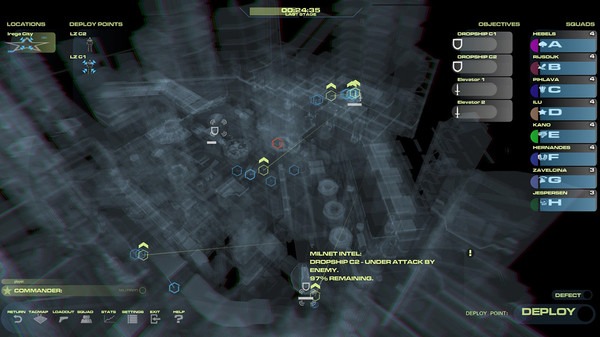
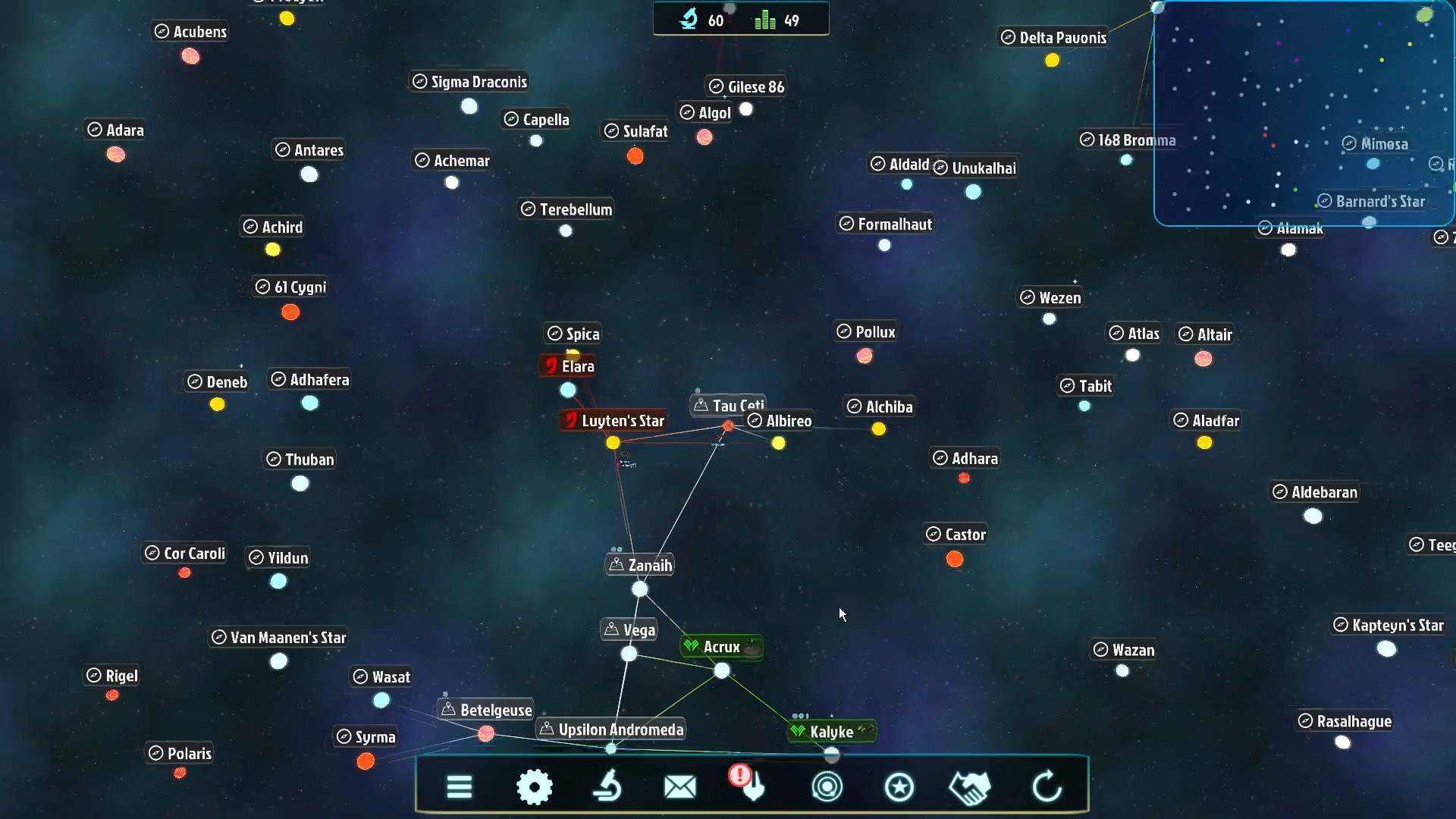
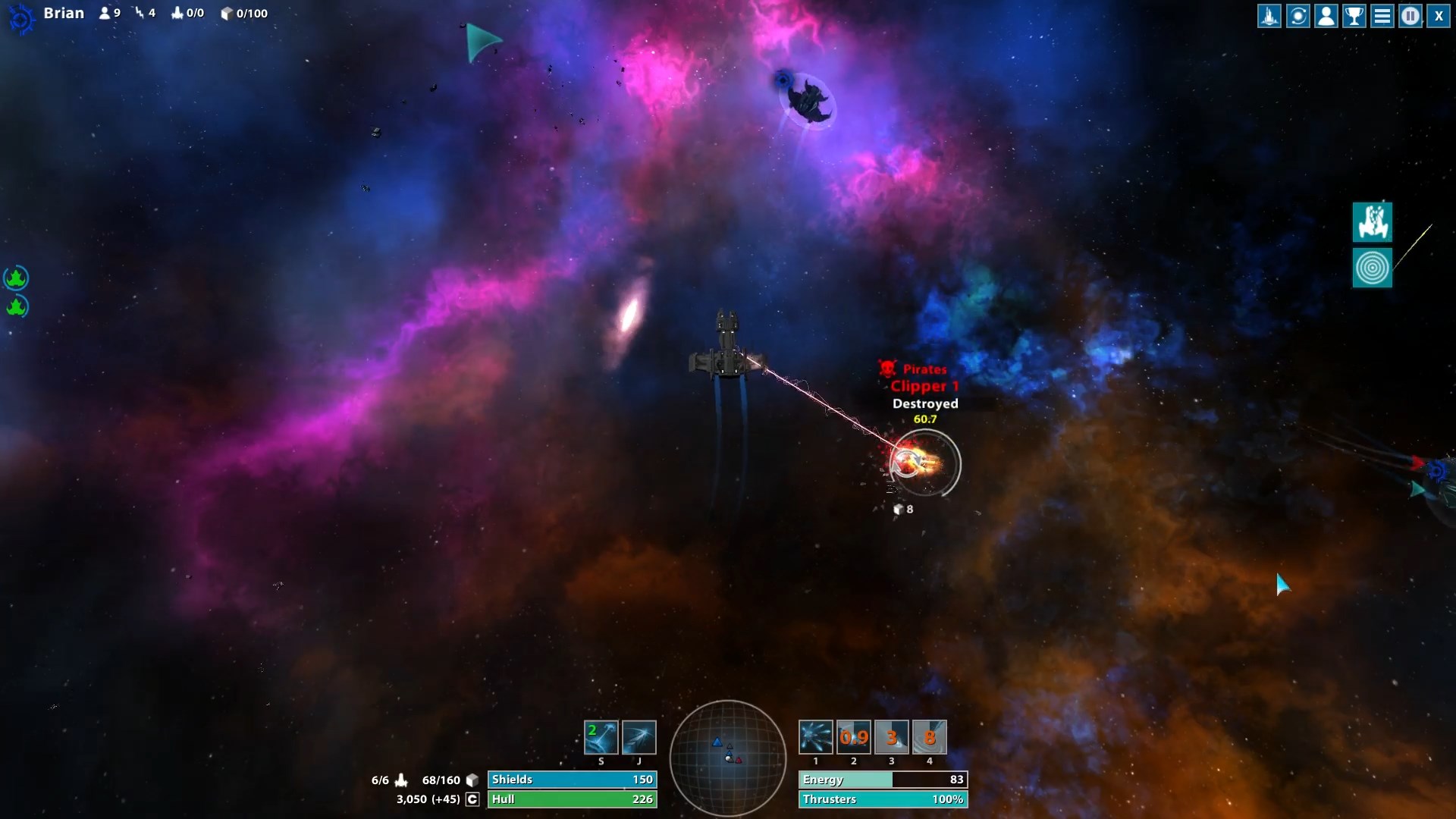
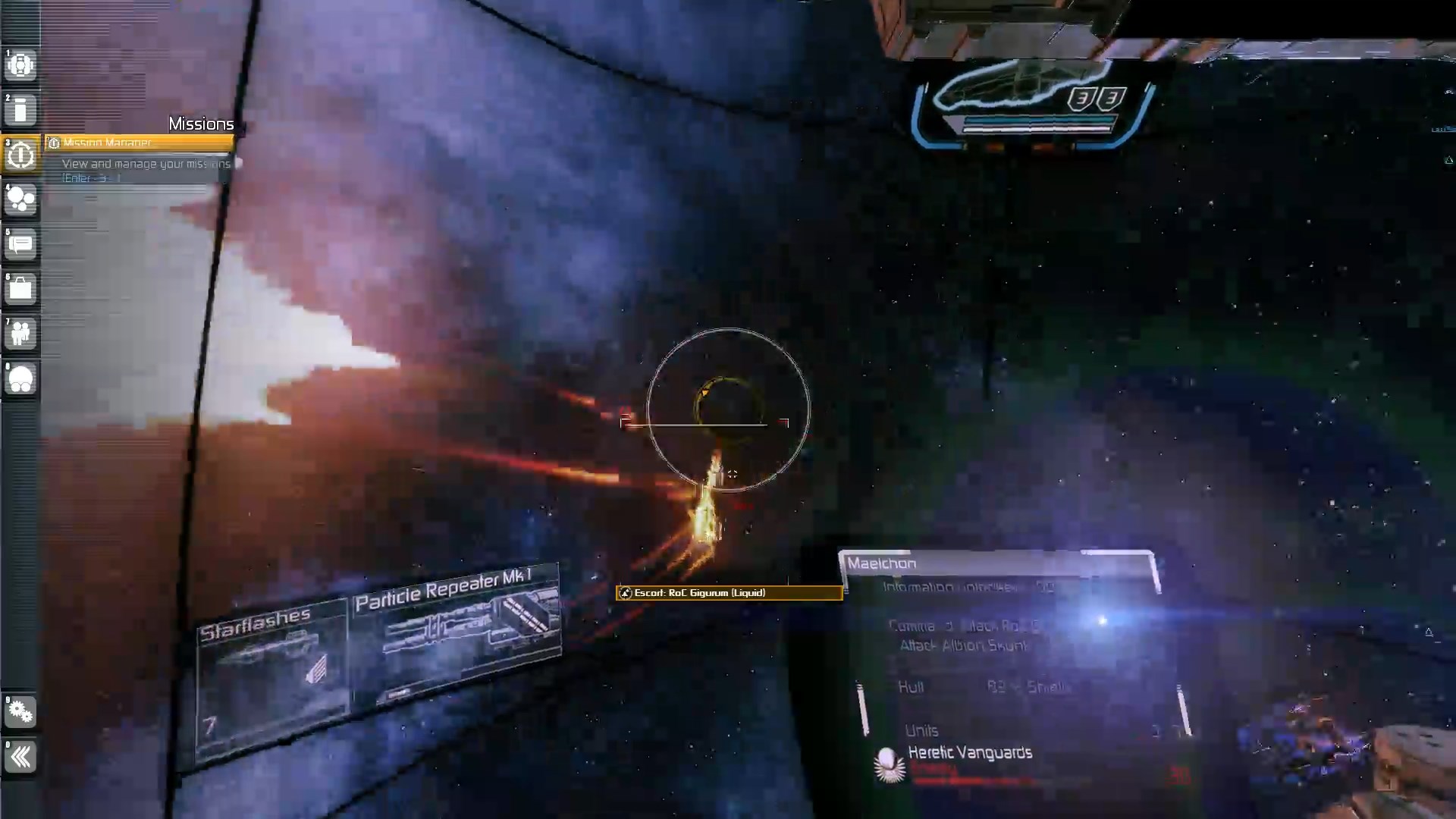
This really is an excellent Q&A. Puts others to shame!
Wow, thanks so much, though much of the credit should go to Eugene for his awesome answers.
Excellent Q&A.
Welcome to the blog, noise, and thank you! :)
wow. the premise for this sounds amazing. the whole mentally def thing could provide a great story for the game. i wouldn’t mind digging up the books this is based off of.
I know, right? Especially if the books are in English. ;)
That’s our first stretch goal – 15k over and the books get translated (and promptly added to appropriate reward tiers). You can probably lay hands on them right now, but, y’know… in Russian. :D
Oohhhhhhh, I might buy into that.
The races sound interesting (yea cephalopods!) UI looks good in the screenshots, and the varying control modes sound fun. I’m excited about this game!
Me too, I really want it to happen. :)
I payed for 25 USD for Skyjacker though Digitlus.com quite a while ago – with a program similar to early acess (I think Alpha though final), and had a email thread directly with Eugene – at the time he could not offer me beta access like the site indicated. he said he awas having trouble with the project nad had to stop. I said keep the money and give me the game when you can. Never do that again. I have tried contacting Eugene, asking if I will get what was promised to me – alpha – beta – final, and I have gotten no return email. I feel ripped off. I have 26 game credits, been in the industry 24 years – I don’t want to bad mouth a developer, but i will relate my experience to anybody who asks about my experience with the developer.
Hey Paul, welcome, and I’m sorry you’ve had a poor experience here. :(
That’s cool Brian – like your site, I think I have every game you play on here :)